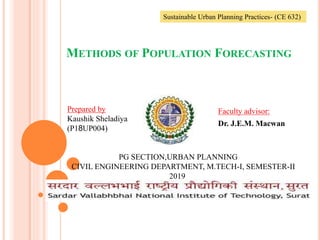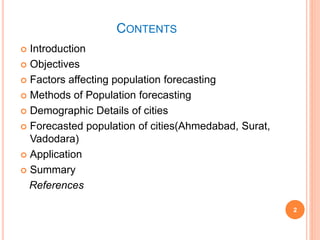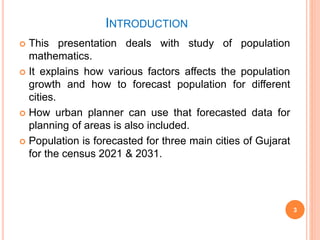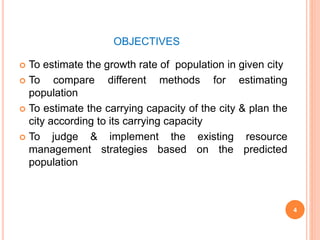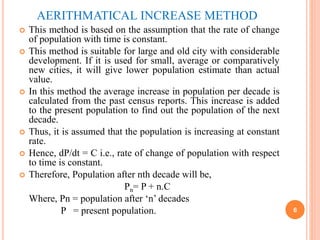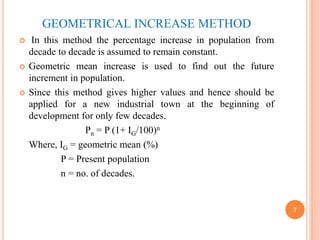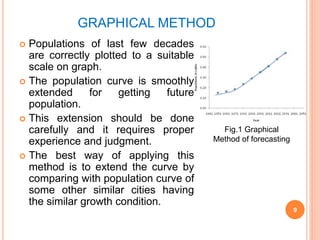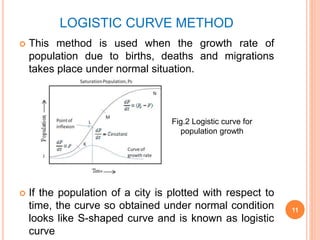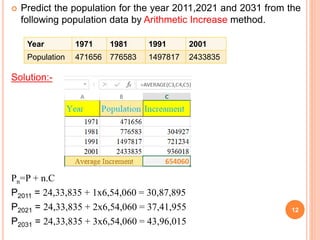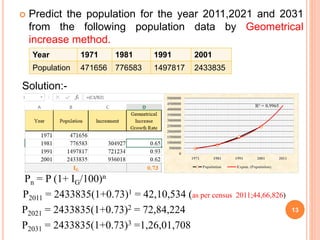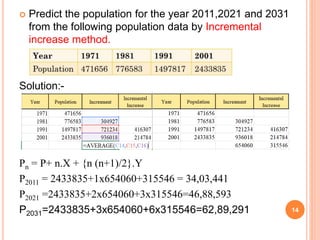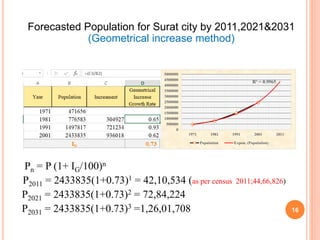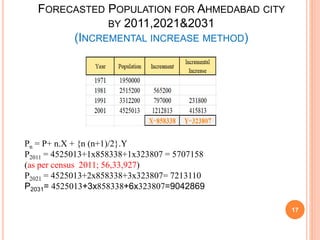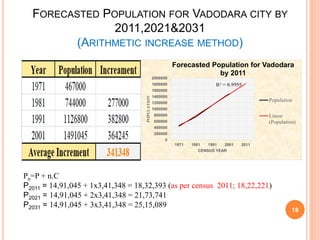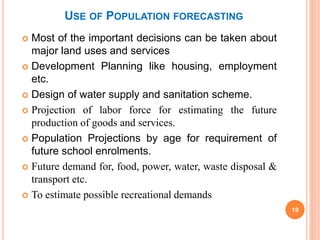This document discusses various methods for population forecasting that can be used by urban planners, including arithmetic increase, geometric increase, incremental increase, graphical, and logistic curve methods. It provides examples of applying these methods to forecast populations for the cities of Ahmedabad, Surat, and Vadodara in India for the years 2011, 2021, and 2031 based on past census data. Accurate population forecasting is important for urban planning purposes such as developing housing, employment, water and sanitation infrastructure, transportation, and recreational facilities for future population needs.
